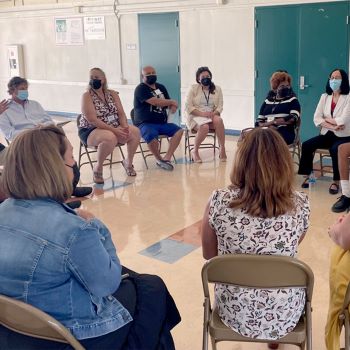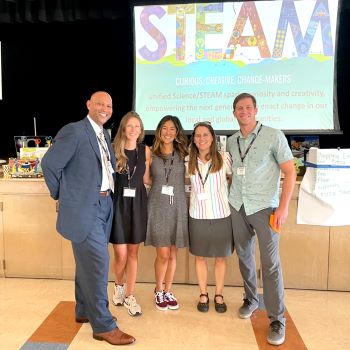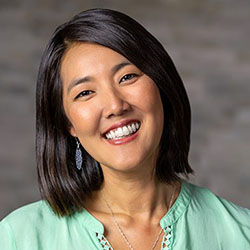Making a Case for Elementary Science through STEAM
By Zoë Randall, STEAM Architect
Hearing the National Call to Action
This October at the CASE conference in Palm Springs, the Call to Action for Science Education was heard loud and clear. One point really stood out to me: “Scientific thinking and understanding are essential for all people navigating the world, not just for scientists and other…STEM professionals.” Effective action at the district level can make elementary science education a priority.
It Takes a Village
San Diego Unified, the 2nd largest school district in California, is home to a diverse student population. Last summer we held our largest STEAM event with 75 principals and STEAM Leads; over 60% of our district.

Student Empathy Interviews
SDUSD leadership had recently introduced principals to the Liberatory Design Framework, so we engaged Deputy Superintendent Fabiola Bagula in our plans to deepen understanding of this framework. We crafted a STEAM experience that connects the district goals with our own by helping principals identify equity challenges. We brought stakeholders together, including principals, STEAM lead teachers, students and area superintendents, for a half-day STEAM Leadership Launch. Adults empathized with students’ experiences.
Okhee Lee, a professor at NYU, shared her work with multilingual learners and Justice-Centered STEM. We left with a communal commitment to prioritize STEAM and teach science.
Five Years in the Making
SDUSD was a lighthouse district in the CA K8 NGSS Early Implementation Initiative grant which gave us a solid foundation in NGSS. Our initiative began with eager TK/K teachers at 32 schools and has grown to include 81 schools supporting UTK–Grade 4 teachers.
As STEAM Architects, Lacy Szuwalski, Cady Staff Hwang, and I write curriculum and lead professional learning. We also utilize our experience in Project-Based Learning. Rather than purchasing a curriculum, the district believed it would best serve our students and teachers to create our own.

STEAM Architects Lacy Szuwalski, Zoë Randall, and
Cady Staff Hwang with former STEAM Innovation Director
and current Principal, Michael Goodbody
Our mission is to cultivate curious, creative changemakers. Our curriculum incorporates local phenomena and partners to create meaningful inquiry-based experiences. We work across district teams to foster authentic connections to technology, arts, and math. Authoring our own curriculum allows a degree of fluidity. During the 2020 Freedom Summer, we integrated an anti-racist and anti-biased approach. For the pandemic, we adjusted to meet distance learning needs. Through feedback and lesson study, teachers help refine it, giving everyone a sense of ownership.
Tips on Implementing STEAM
- Start small with a coalition of the willing.
- Align your program with other district goals and initiatives.
- Creatively use funding and grant opportunities to enable professional learning.
- Provide teachers with lesson plans and instructional materials.
- Involve your teachers as co-designers.
Full STEAM Ahead
I’m proud of the progress we’ve made but we still face challenges including limited time in the school day. As new funding sources become available for science and art education, we need to collaborate across disciplines for an integrated approach to engage students throughout their day. Together, we can make science a priority for our youngest learners through STEAM.
References:
Call to Action for Science Education: Building Opportunity for the Future. Washington, DC: The National Academies Press. https://doi.org/10.17226/26152
Fast Facts https://bit.ly/3UVYfV3
Liberatory Design Framework: https://www.nationalequityproject.org/frameworks/liberatory-design
Building Anti-Racist & Restorative School Communities | BoardDocs
Zoë Randall is a STEAM Architect who is passionate about deeper learning, equity, and creativity.








